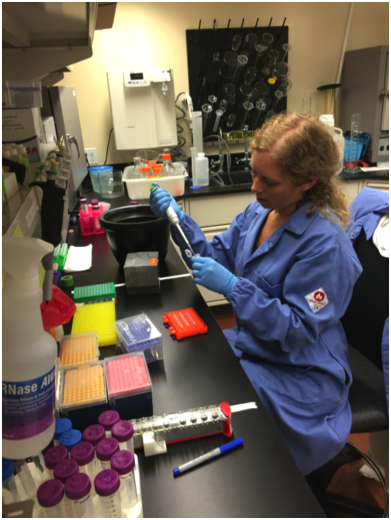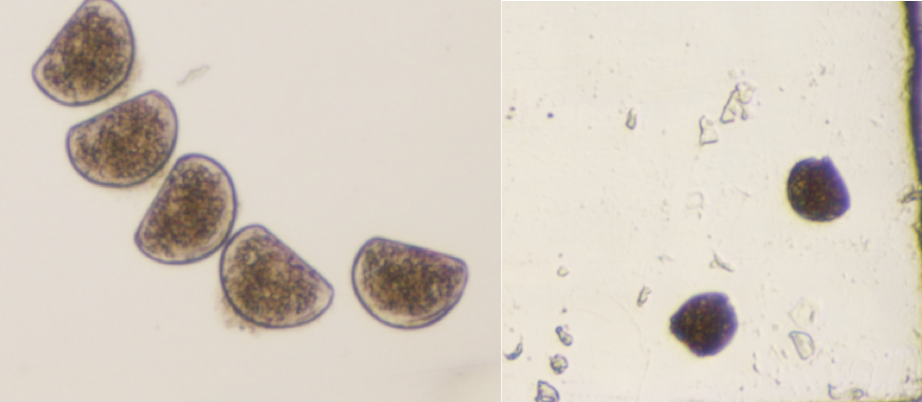By: Megan Hall
For the first time in four years, I didn’t spend the summer on Catalina Island at Wrigley Marine Science Center. Instead, I was thrilled to be spending my time in the lab on the mainland as a Norma and Jerol Sonosky Fellow. After many years of field sampling, wet lab experiments, and preparations, I was finally able to get to the heart of my research goals and delve into my large datasets for clues about how climate change will affect coastal water pollution.
A central theme of my research has been updating water quality testing methods for copper. Copper is a common pollutant in urban regions, entering coastal waters via storm water runoff and antifouling paint on the hulls of boats. Regulations on copper in marine ecosystems have long been determined by live testing with mussels. Very young mussels (0-3 days old) are especially vulnerable to pollution, and abnormal patterns in their development can be indicative of problematic copper levels in coastal waters.
While pollution is still a major problem, concerns about climate change and ocean acidification have also escalated in recent years. Scientists are trying to understand how ocean acidification may interact with other existing stressors, and the implications for water quality could be great. For the past several years, I’ve been investigating gene expression in young mussels as a new and potentially more sensitive indicator of copper exposure. This summer, I am trying to understand what these genetic biomarkers could reveal about mussels’ ability to handle combined stressors as the ocean changes.
An organism’s gene expression is highly responsive to environmental changes, so expression is a good indicator of what kinds of stress an animal is experiencing. Using next generation sequencing, researchers can look at expression changes for almost every gene in the animal’s genome. Sequencing can reveal large-scale shifts in expression of many genes, as well as changes in expression of a single gene of interest. I will both look at these larger patterns and try to tease out some important genes that could be used as biomarkers in water quality tests.

An example of a gene expression profile produced by next generation sequencing. Color differences indicate genes (rows) that change with different environmental conditions (columns).
After conducting experiments, extracting RNA, and preparing Illumina sequencing libraries, I’ve just started to dig in to the wealth of data I now have available. So far, I’ve seen that gene expression in mussels exposed to both simulated ocean acidification and copper is quite different than expression in mussels exposed to copper alone. And most interestingly, ocean acidification actually seems to be reducing the toxicity of copper to young mussels! As I continue to explore the expression data, I hope to get some clues about what could be causing this unexpected result.
Previously a WIES Fellow at Catalina Island, Megan is a 2016 WIES Sonosky Fellow. She is currently finishing her PhD work in the research group of USC Professor Dr. Andrew Gracey to assume a position as a Knauss Marine Policy Fellow in Washington DC in January 2017.


